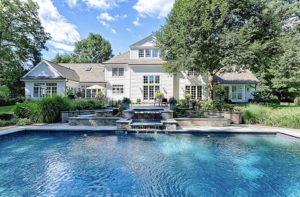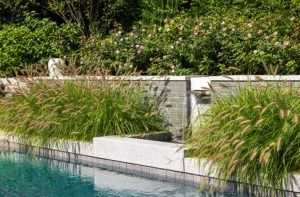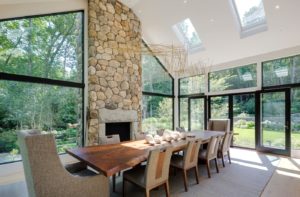Greg Premru: Window Light—Getting it Right
May 3, 2011
As I mentioned in my previous guest post, “Three Approaches to Composing Interior Photos,†there’s more to creating beautiful photos of interiors than the average reader might realize. Let’s talk about one often-overlooked ingredient: window light. More precisely, let’s compare natural light coming through a window into a room with the brightness of the window as seen in a photograph.
If it’s a sunny day and light is streaming into a room, your eye (and mind) adjusts to both the light and dark parts of the interior space as well as the much brighter exterior spaces outside the window. While you “get†that you’re viewing a lovely, light-filled room, you also perceive the brighter world outdoors.
Through a camera, the situation is very different. If you photograph a room so that the view outside looks right, the room itself will look very dark and dingy. If you adjust your shot to make the room look light and welcoming, the windows will probably “blow out†to all white. So how do you find the right middle ground? Surprise, surprise–there’s no single correct way. But when you manage window light effectively, you strike a balance that shows your interior at its very best. Here are some examples:
In this classic interior by Susan Reddick Interior Design, the daylight is kept bright, creating an airy, luminous quality in the room. With just enough exterior detail (the antique streetlamp, the ancient tree) allowed into the image, we get a strong sense of the history of this Beacon Hill residence. If the window light were less than or equal to the inside light, then the image would lose its warmth and sense of depth.

Interior Design by Susan Reddick, architecture by Mellowes & Paladino
Now let’s take the elevator up to a Manhattan residence by interior designer Kristin Rivoli. In this striking vignette, we can easily see that sometimes what’s outside is equally as important as what’s inside. This seating area is all about taking in the city views, so keeping the window light equal to or darker than the interior brightness accomplishes two things. First, it compresses the space, adding to the feeling of the city’s density. Secondly, it gives the viewer a clear understanding of the space’s purpose.

Interior Design by Kistin Rivoli
In my experience, though, showing too much of what’s outside the windows typically detracts more from an image than it enhances it. This is especially true when photographing details and vignettes. Keeping the windows bright creates a warm, light-filled space, promotes understanding of the space and allows the viewer to focus on the design. These two simple vignettes from another Susan Reddick room illustrate my point:

Interior design by Susan Reddick
In these two views you can see and feel how a change in the brightness of the window changes the entire image. Which do you prefer?
–Greg Premru
Greg Premru is a noted architectural and interiors photographer based in the Boston area. His photographs have appeared in New England Home and many other regional and national magazines. He is currently working on a book about New England with author/producer Bruce Irving, due out this fall. See more of his work at www.gregpremru.com
Share
![NEH-Logo_Black[1] NEH-Logo_Black[1]](https://www.nehomemag.com/wp-content/uploads/2022/08/NEH-Logo_Black1-300x162.jpg)








You must be logged in to post a comment.